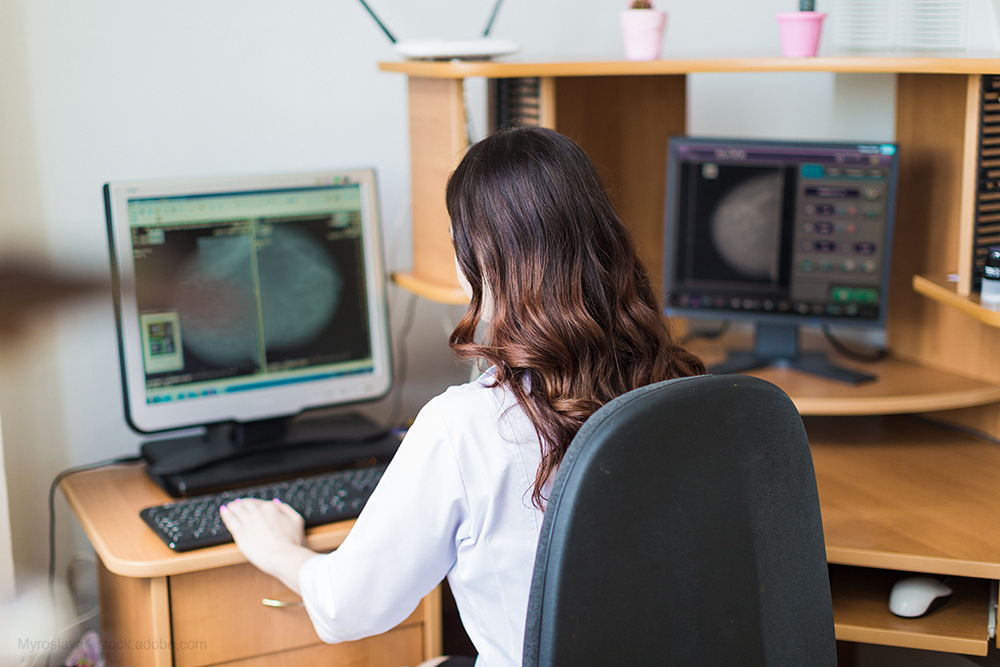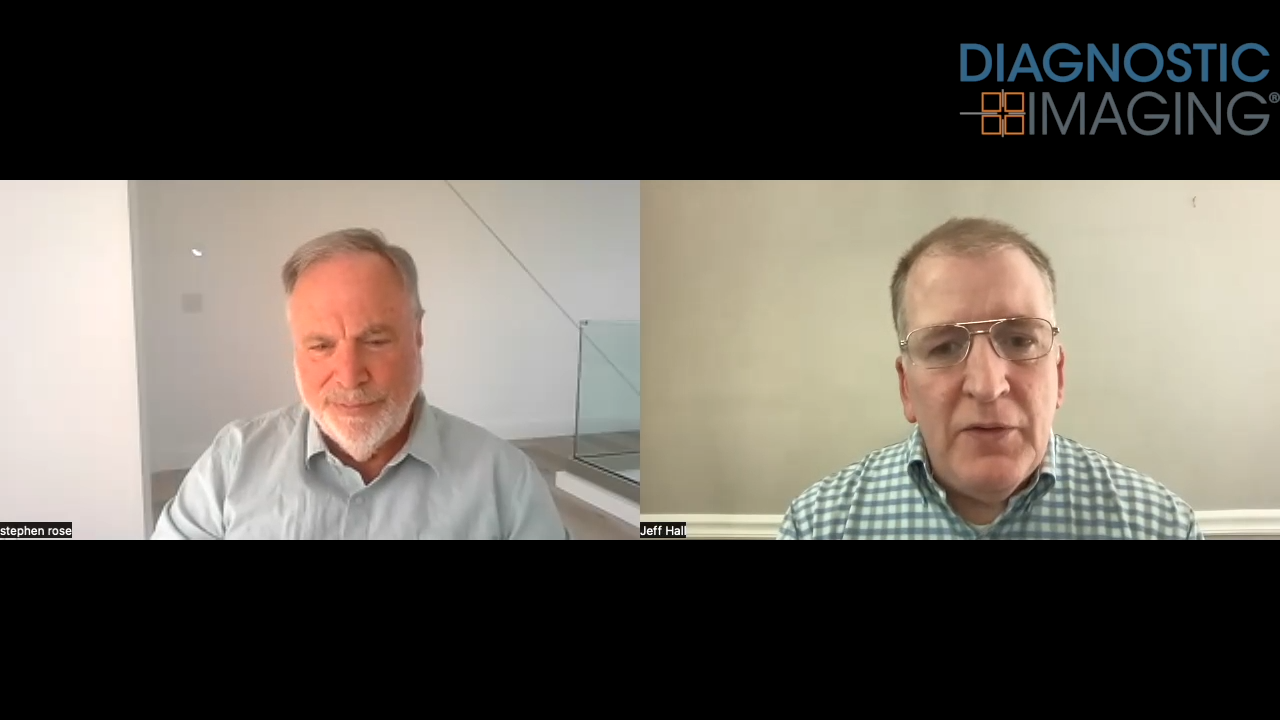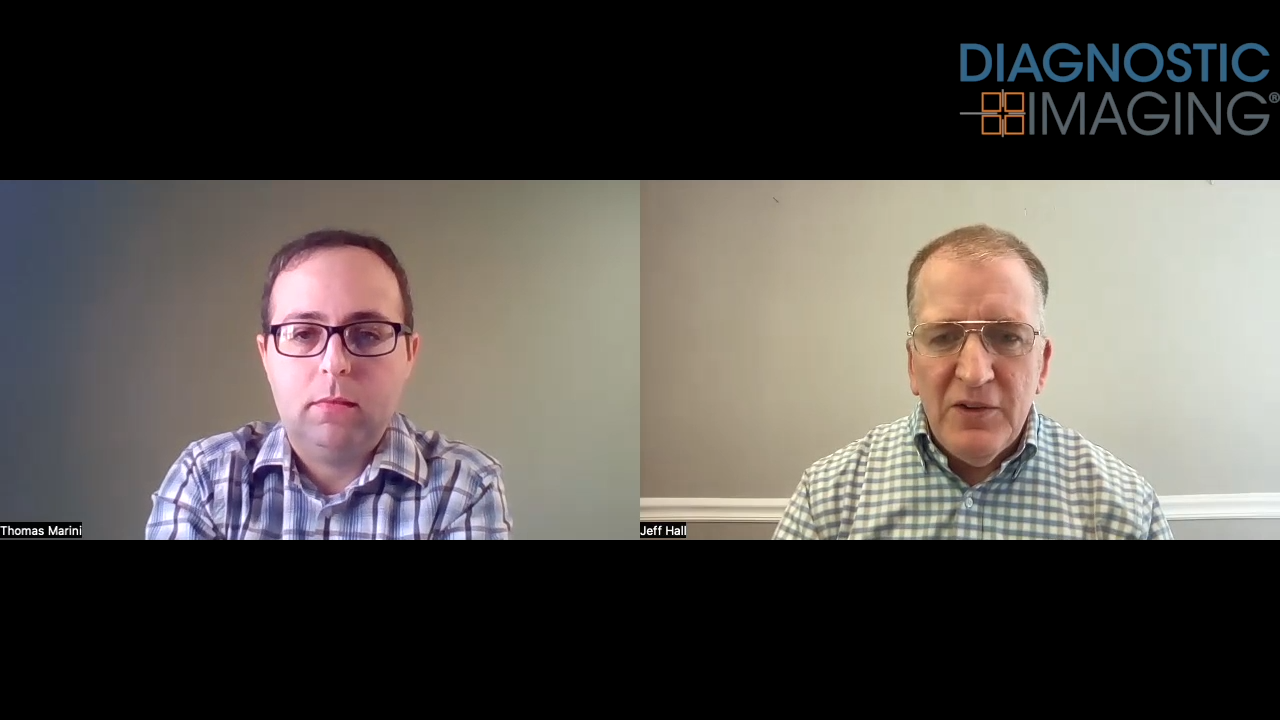Breast Ultrasound Equally Beneficial After Mammography and Breast Tomosynthesis
New research reveals supplemental breast ultrasound provides the same level of additional cancer detection after digital breast tomosynthesis as it does after digital mammography.

When it comes to identifying breast cancer in women, mammography is still considered the gold standard screening option. In recent years, however, digital breast tomosynthesis has been gaining ground as a modality that can provide better detection for women with dense breasts.
Regardless of the method, radiologists frequently suggest additional breast ultrasound screening when results are unclear. And, new research, published in the American Journal of Roentgenology, reveals supplemental breast ultrasound provides the same level of additional cancer detection after digital breast tomosynthesis as it does after digital mammography.
“Our study found no evidence to suggest a difference in additional cancer detection rate with screening ultrasound after digital mammography versus after digital breast tomosynthesis,” says lead author Elizabeth H. Dibble, MD, assistant professor of diagnostic imaging at the Warren Alpert Medical School at Brown University. “These findings suggest that patients who have undergone screening mammography with digital breast tomosynthesis maintain a similar benefit of detecting mammographically occult cancers on screening ultrasound compared with patients who have undergone screening mammography with digital mammography.”
To determine whether breast ultrasound provides a difference in benefit between the two modalities, Dibble and her colleagues conducted a retrospective database search of two tertiary breast imaging centers, as well as an office practice staffed by the same fellowship-trained breast radiologists. They concentrated on records from Oct. 1, 2014 to Sept. 30, 2016, calculating both mammographically occult cancers detected with breast ultrasound and additional benign lesions requiring biopsy.
All total, they examined the records of 3,183 screening breast ultrasounds-1,434 (45.1%) conducted after digital mammography and 1,668 (52.4%) conducted post-digital breast tomosynthesis. Out of all exams, only 81 (2.5%) did not have a prior mammogram available. Biopsy or cyst aspiration was recommended for 122 women who underwent digital mammography or digital breast tomosynthesis. Those results were available for 118 (96.7%) individuals.
Related article: Patient Comfort During Whole-Breast Ultrasound
Among the 36 women who received biopsies or aspirations after digital mammography, six results (16.7%) were malignant and 30 (83.3%) were benign. The outcomes for the 82 women who had biopsies or aspirations after digital breast tomosynthesis were similar-11 (13.4%) were malignant, and 71 (86.6%) were benign.
Women included in the study waited nearly the same amount of time for their ultrasound follow-up screenings, underscoring the similarity of the study results. Between digital mammography and ultrasound, the time was an average of 162 days. It was 152 days between ultrasound and digital breast tomosynthesis.
Based on this data, Dibble says, additional cancer detection rates were nearly equivalent. Breast ultrasound after digital mammography found 3.5 more cancers per 1,000 women screened. After digital breast tomosynthesis, the rate was 3.0 per 1,000 women screened. This outcome, she says, reflects previously published results for women who were screened with handheld ultrasound devices after having a mammogram completed.
Overall, she says, these results demonstrate that digital breast tomosynthesis does not render the supplemental screening ultrasound unnecessary for women who have dense breast tissue. With no evidence pointing to a difference in the number of additional cancers found after both digital mammography and digital breast tomosynthesis, she says, providing the secondary service can be critical.
Identifying this similarity in outcome can also inform clinical practice, she says, because questions still exist about whether digital breast tomosynthesis offers women with dense breasts a sufficient screening for breast cancer.
Still, Dibble explains, additional research is needed with a larger patient sample from a wider geographic area, and future studies should re-confirm breast density for any enrolled women to ensure the accuracy of results. In doing so, subsequent investigations could better examine the personalized screening options for both patients at average and above-average lifetime risk for developing breast cancer.
Clarius Mobile Health Unveils Anterior Knee Feature for Handheld Ultrasound
April 23rd 2025The T-Mode Anterior Knee feature reportedly offers a combination of automated segmentation and real-time conversion of grayscale ultrasound images into color-coded visuals that bolster understanding for novice ultrasound users.
What New Research Reveals About Novice Use of AI-Guided Cardiac Ultrasound
April 4th 2025In a study recently presented at the American College of Cardiology (ACC) conference, researchers found that novice use of AI-guided cardiac ultrasound after an AI-enabled electrocardiogram increased the positive predictive value for reduced left ventricular ejection fraction (LVEF) or aortic valve stenosis by 33 percent.
New AI-Enabled Portable Ultrasound May Facilitate 50 Percent Reduction in Cardiac Imaging Scan Time
March 28th 2025Artificial intelligence (AI)-powered measurement capabilities provide key features with the Compact Ultrasound 5500CV device, which was unveiled at the American College of Cardiology (ACC) conference.










